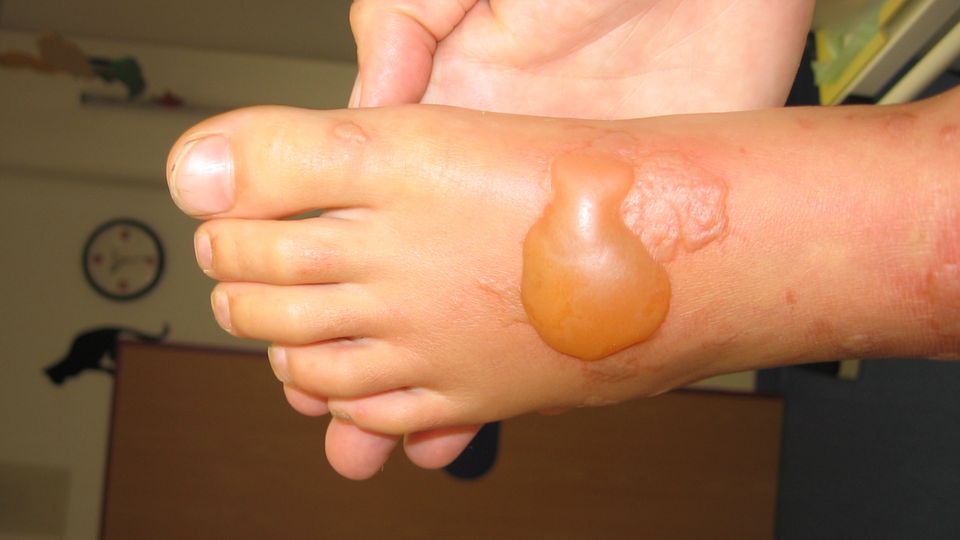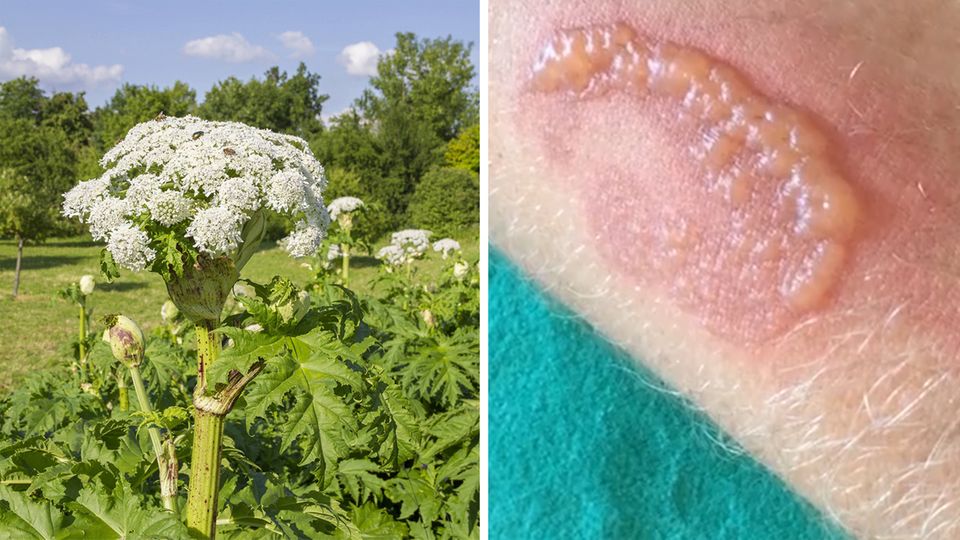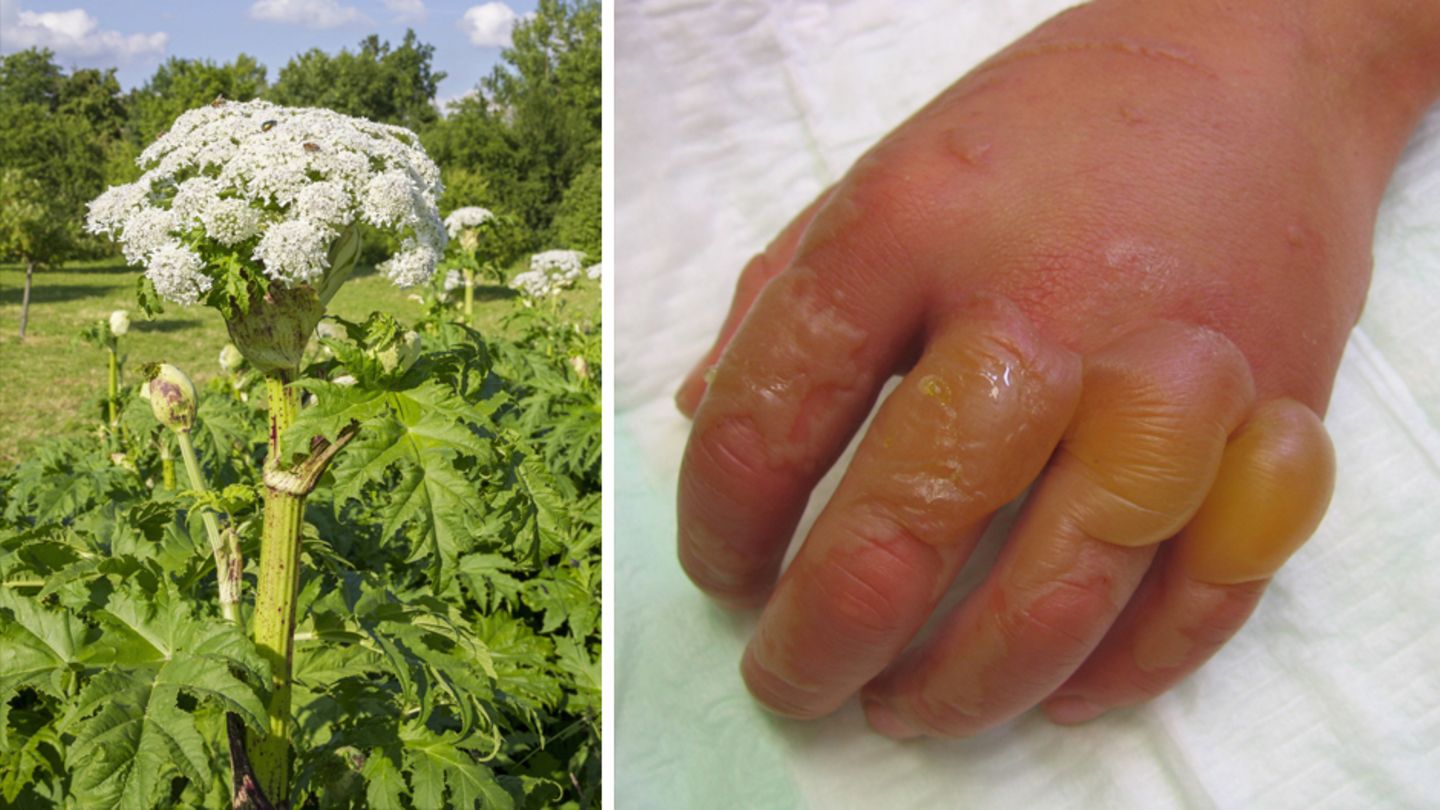The giant hogweed was once planted as an ornamental plant in gardens and parks. But now the plant causes a lot of trouble. Anyone who comes too close will feel it.
The giant hogweed – also known as the Hercules shrub – is a plant that invites you to touch. Almost majestically, it stretches its white flowers into the sky. They are enthroned on a thick hairy style that shoots up to five meters in height. The jagged leaves of the plant alone can reach a size of one meter. The giant hogweed comes from the Caucasus and once adorned gardens and parks in this country. From there it has spread to the rest of the world. But he’s dangerous. And many people do not know that, who are happy about the unexpected splendor along the way – and possibly touch it.
Then the giant shows its ugly side: If you come into contact with the leaves and then expose the area to sunlight, you risk nasty burns. The skin blisters painfully, becomes red and inflamed. Direct contact with the sap can even cause first and second degree burns. The wounds usually heal again. But they may leave scars.
Authorities and environmentalists are warning about the plant for a reason. Authorities because they want to protect citizens from the health consequences. Environmentalists, because the perennial also threatens the native flora. The giant hogweed spreads quickly and displaces local plants by robbing them of the light to grow. The perennial is now thriving, its spreading varies from region to region – with a general increasing tendency.
Fighting the giant is therefore important, but how? We answer the most important questions.
What makes the plant so dangerous for humans?
If the perennial sap gets on the skin, it causes burns in combination with sunlight. This is due to the phototoxic substances contained in the juice. They call themselves furocoumarins. For a reaction it is enough to touch the leaves of the giant hogweed. Symptoms are not immediately apparent and usually take a while to show up.
Important: The sap can also penetrate clothing. If symptoms such as circulatory problems, fever or sweating occur after contact with the plant, a doctor should be consulted immediately.
How do I recognize the giant hogweed?
The giant hogweed (Heracleum mantegazzianum) thrives mainly on river banks, forest paths and roadsides. A single plant can grow up to five meters tall. The leaves of the perennial are strongly serrated, the hairy stalk is adorned with green and reddish speckles. Giant hogweed blooms in June and July. Its flowers are white.

Some umbelliferous plants are similar to the giant hogweed, including the horned fox (Aegopodium podagraria), the parsnip (Pastinaca sativa) or the wild carrot (Daucus carota). The meadow hogweed (Heracleum sphondylium) is closely related to the giant hogweed and looks very similar to it. However, its leaves are more lobed than jagged. Meadow hogweed can also cause so-called meadow grass dermatitis in sensitive people. The skin turns red.
I accidentally touched the giant hogweed. What now?
In such a case, this advises looking for a shady place and cleaning the affected areas with soap and water. If you experience severe symptoms or feel unwell, a doctor should be consulted.

The poisonous plant grows in the garden. How can I fight them?
If you want to remove the giant hogweed, make sure you have adequate protective clothing. These include: long trousers, a long-sleeved shirt, gloves, face protection and safety glasses. A cloudy day is recommended for work.
It is best to cut the plant at least ten centimeters below the surface of the earth and then clean all the equipment used. If you cut the stalk above the ground, you risk that the plant will sprout again. Small plants can be mowed. However, this work must be repeated regularly when the plant grows back.

All plant remains should be carefully disposed of in the residual waste. Blossoms also belong in the trash. They may mature and form seeds, which contributes to the spread of the giant hogweed.




